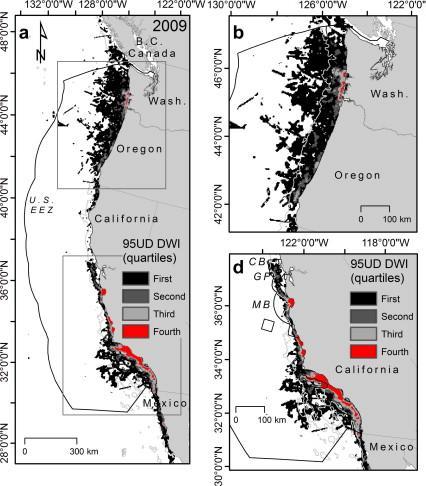Seabirds are often well protected at their breeding sites, yet have little protection at sea during the majority of their life cycle. Understanding seabird movement throughout the entire annual cycle is critical to identifying ecologically important zones and setting aside areas for conservation.
In 2010, the first World Seabird Conference was held, and a special issue of Biological Conservation has just been published from the conference featuring: Seabirds and Marine Protected Areas Planning.
The journal synthesizes many issues and methods regarding Marine Protected Areas, including using seabird movements to identify ecologically important regions, using sometimes limited distribution and foraging data to map biological “hotspots,” and comparisons of modelling techniques to predict spatial patterns.


